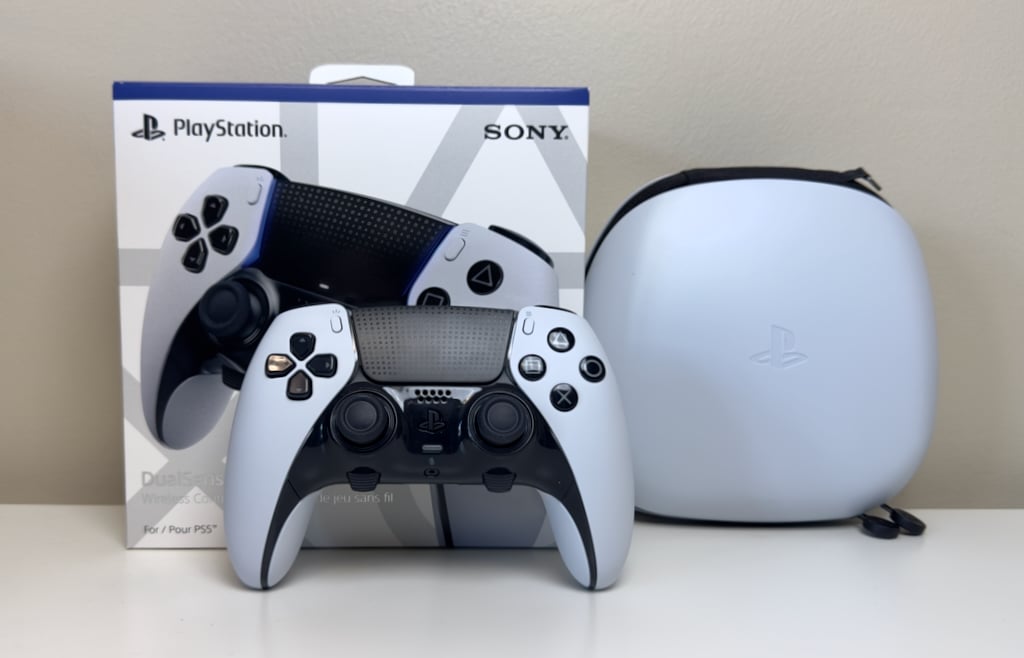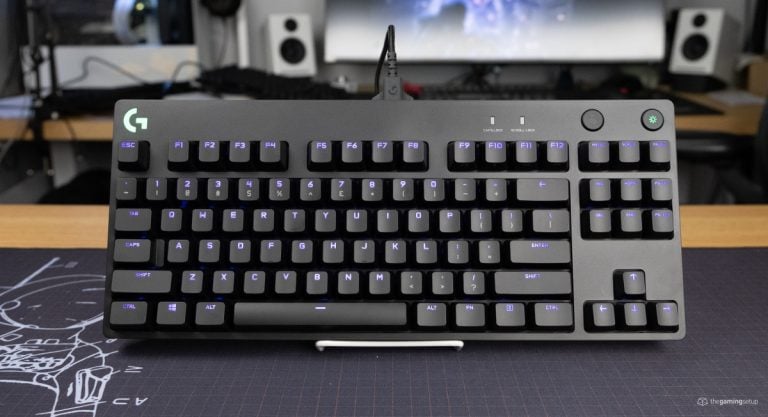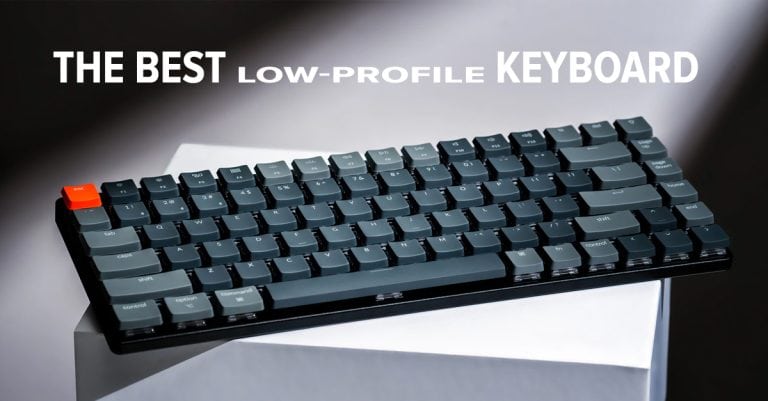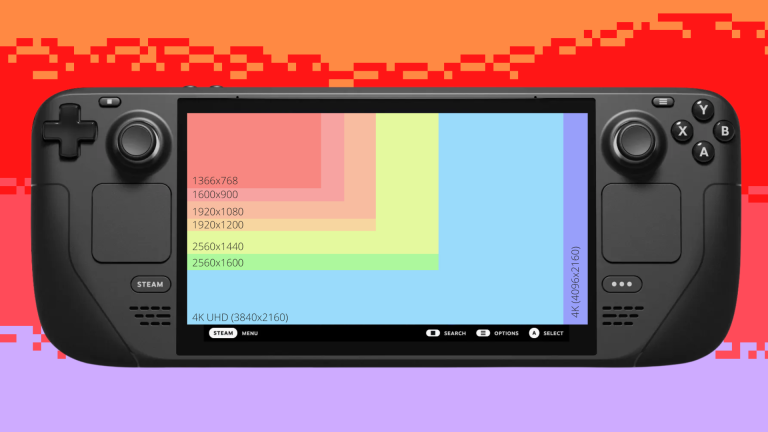A high end premium controller has long been missing in Playstation 5’s accessory line up considering the Xbox is already on its second generation of elite controllers. At $200, the DualSense Edge needs to deliver a lot, and it does for a certain type of gamer.
The Edge does a good job of retaining the DualSense design, while adding a boatload of customization with modular thumbsticks, adjustable depth triggers, back paddles and software customization. But if you’re not a competitive gamer, I’m not sure if the benefits outweigh the higher cost.
Verdict
The DualSense Edge really is made for the competitive shooting gamer in mind. The thumb stick adjustments will allow a lot more flexibility in playstyle and classes for shooters. In other games, I’m not so sure. The adjustable triggers will give you a quick draw advantage over plebes using regular controllers.
The software experience is also great for this use case, switching from an M4 to an SP-X 80 can be paired with a quick profile switch to give you a more precise aim.
The controller is also more accessible, with two back buttons that can be remapped to anything allowing for more types of grips.
For everyone else, the $200 price point isn’t really worth, especially considering the reduction in battery life. Even if the thumbsticks die on your original DualSense, you can buy at least 3 controllers before matching the price point of the DualSense Edge.
Pros
- Great software customization
- Modular design is great for repairability and hardware customization
- Slightly smaller shape will benefit some
- Customization options can give you an edge in comp games
- Shortened triggers allow for more responsive gaming
Cons
- Shortened trigger feel a little mushy
- 33% less battery life
- Bad PC support
- Only two back buttons
- No hall effect sensors at this price
A revamped thumbstick system
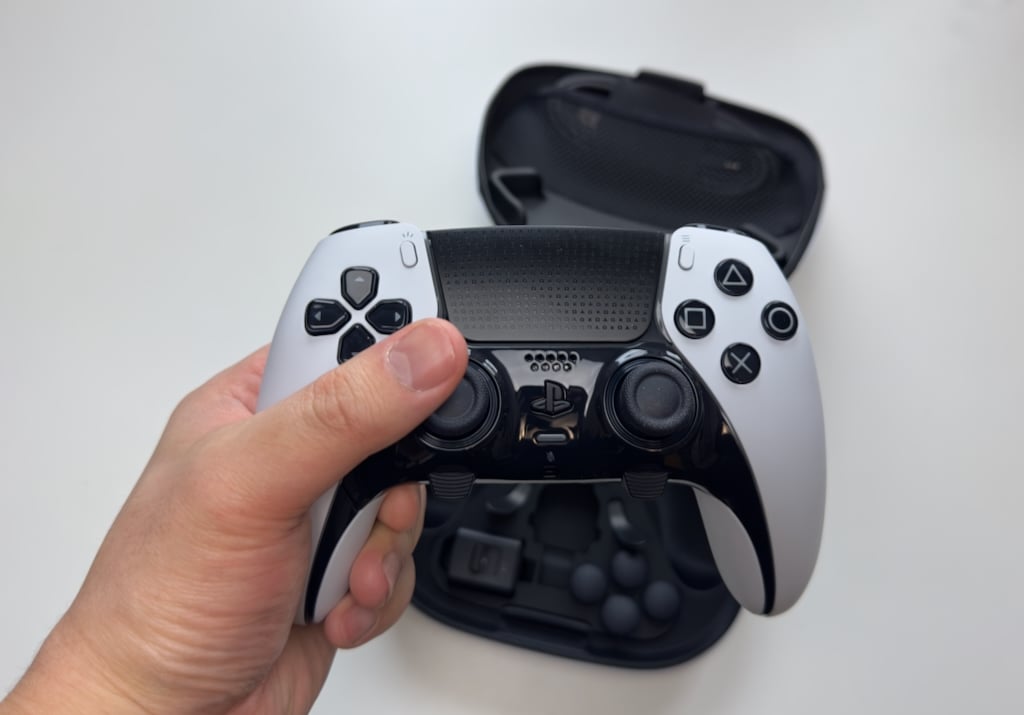
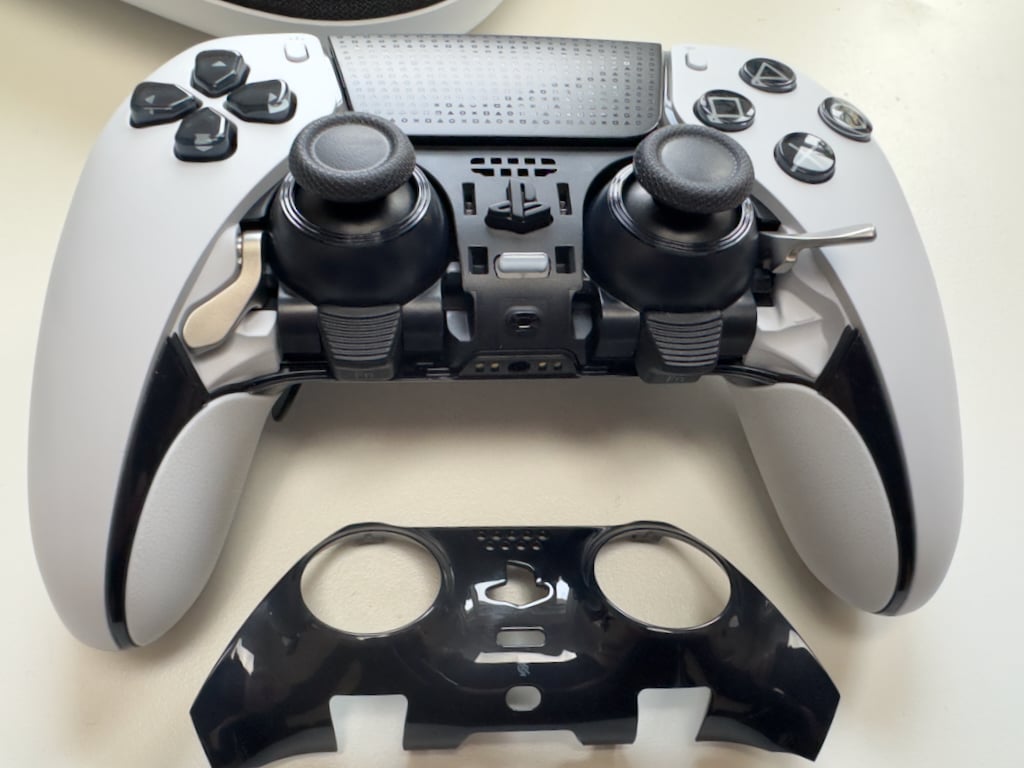
The DualSense Edge has replaceable sticks that allow you to swap a new joystick module without the need of tools. This is important for gamers who’s controller tend to develop stick drift. If you ever find your controller not behaving, a swap to a fresh joystick module will only cost $20.
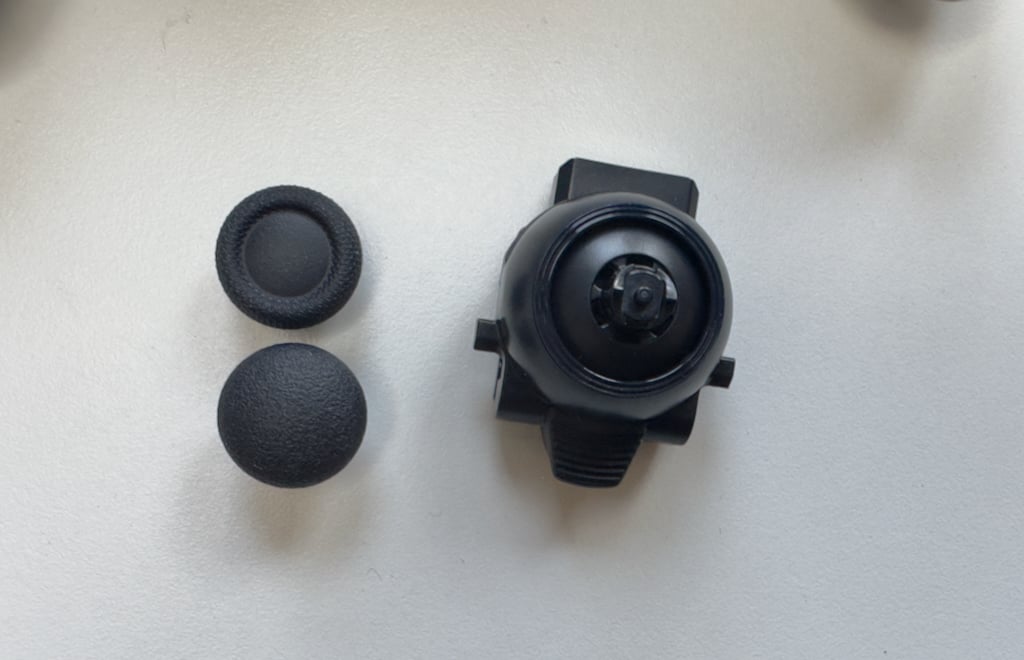
At this price point, I was hoping for the sticks to use Hall Effect sensors, eliminating the risk of stick drift altogether. The core module feels the same as a stock DualSense controller, but I imagine third parties will have their own offerings that might add unique aspects like more resistance, or Hall Effect sensors.
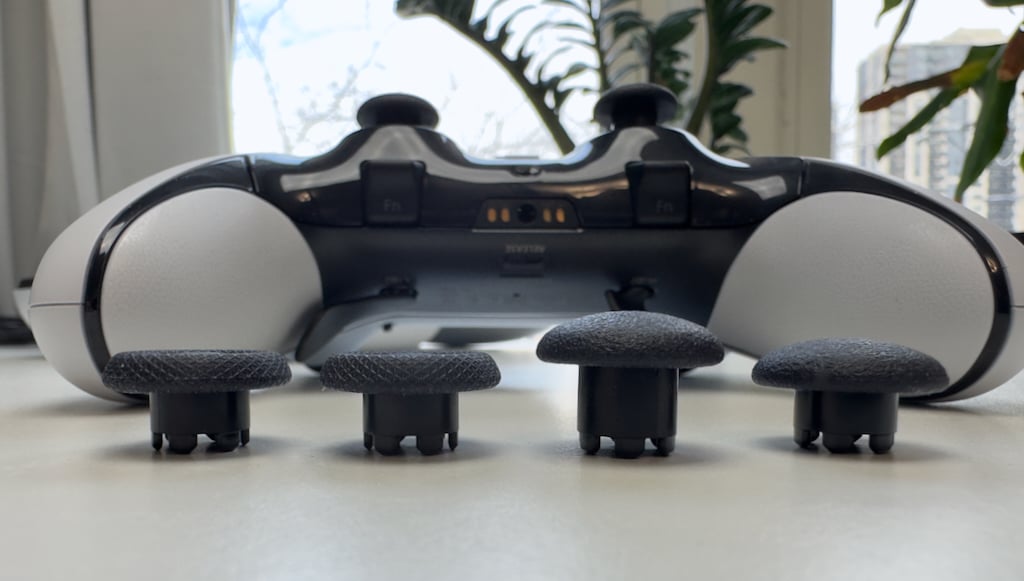
The DualSense also features removable stick caps, marking the return of the old school convex shape at two different heights. The convex shapes are instantly recognizable and feel like the Dual Shock thumbsticks, though I think the modern shape is better. The variable height is welcome for players who find the shorter height a little cramped. We will also likely see a ton of third part support for cap sticks.

A software feature might just be the biggest upgrade on this controller. The Edge allows you to set your stick sensitivity to suit the game you’re playing. Here are all the modes:
- Default: Linear curve
- Quick: Accelerates to full tilt quickly, which might be better suited for twitchy games and flick aiming
- Precise: A slower ramp up to full tilt, really good for micro adjustments and sniping
- Steady: Will make the initial ramp up quite slow to ensure smooth movement
- Digital: Removes any ramp up, 0 to 100 instantly.
- Dynamic: Gives you a steady aim in the middle range of the stick, but a lot of tilt when you fully push, allowing you to have a good mix of aim steadiness and turn speed.
Stick sensitivity can be set individually to each stick so your move and aim sticks can have their own settings. The Edge also allows for tweaking of your curve to really give you as much control over your thumb stick as possible.
Each setting is then tied to a profile, so you could switch to Dynamic for a BR like Fortnite, then to Quick for Overwatch. Even having different sensitivities for sniping, mid range and run and gun would be useful to have.
The controller also lets you set deadzone, but you should set this to 0, unless you’re getting stick drift, then turn the setting up or get a replacement stick.
Buttons
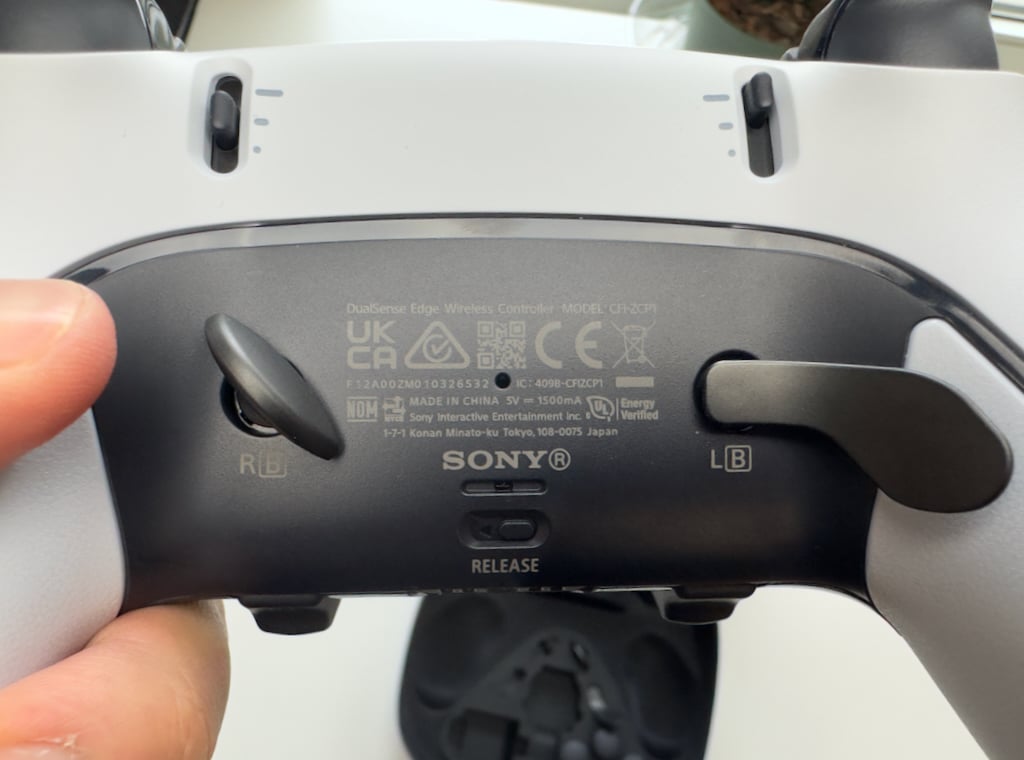
Sony has finally caught up and added back pedal buttons onto the DualSense Edge. But even now, it only has two when other high-end controllers feature 4. There are two back paddle types that come with the DualSense Edge, the lever type and the half dome. I’m liking the feel of the half dome, as it seems to be less in the way if I’m gripping the controller a little too tightly.
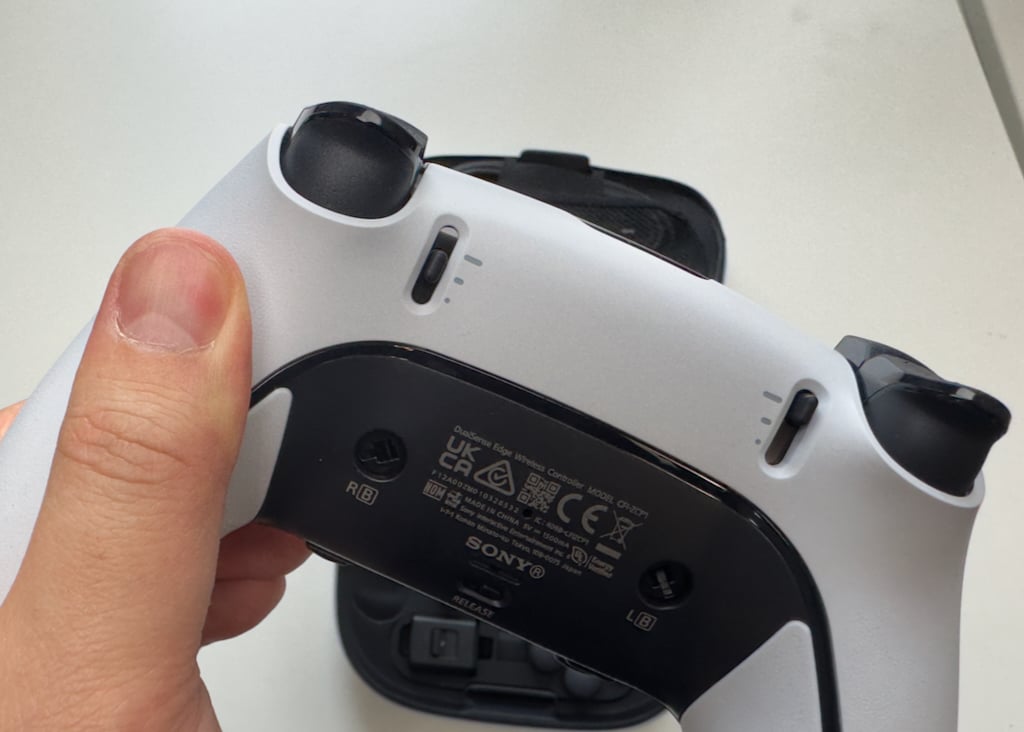
Installing the pack pedals is easy, they only slot in one way and require a good amount of wiggling out to dislodge, so I don’t think there’s any worry of them getting dislodged by accident.
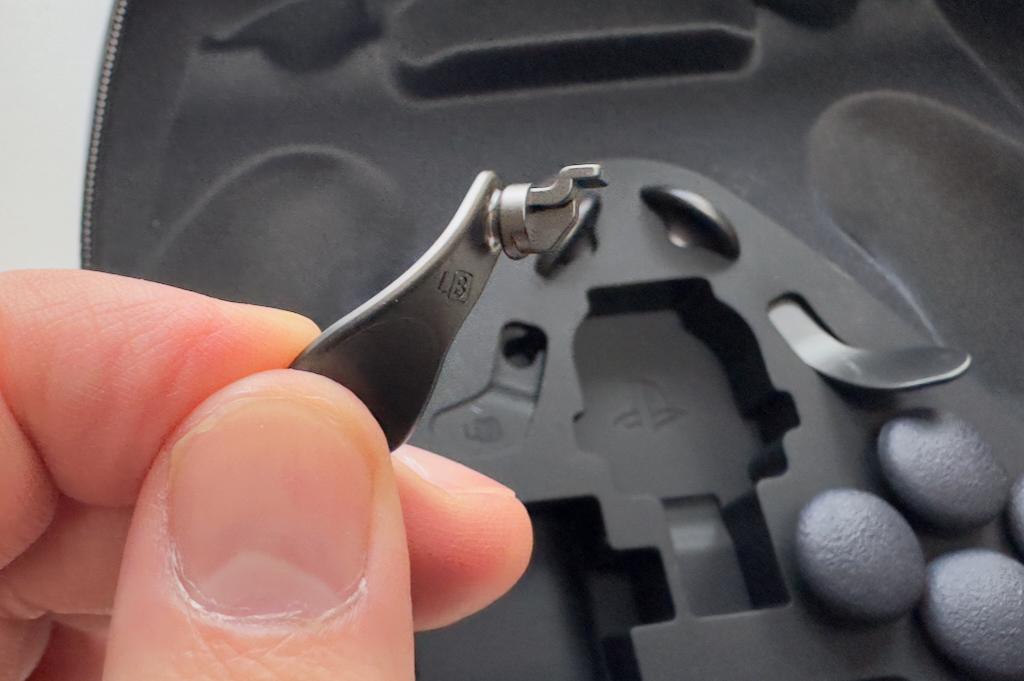
The paddles are made of metal and feel high quality.

The back paddles can be re-mapped to any other single button press, unfortunately no ability to do combo presses or macros. C’mon Sony!
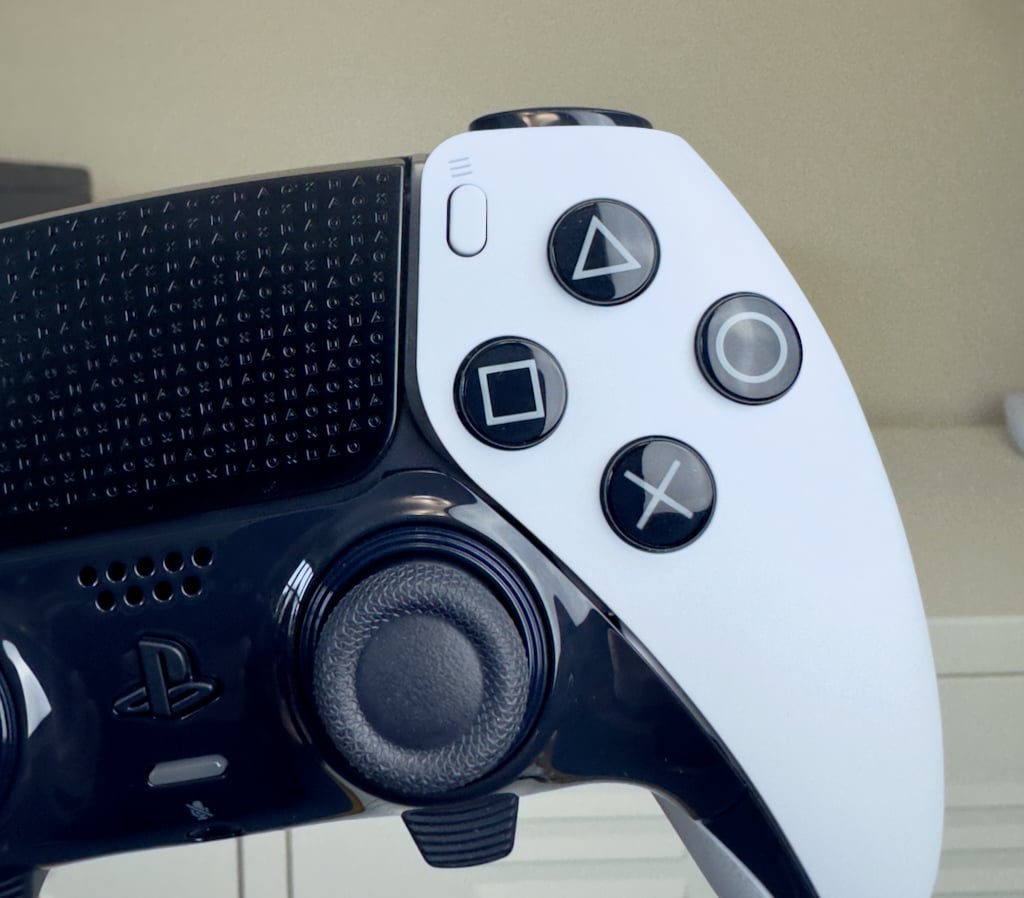
When you hold down the Fn button, a quick menu pops up allowing you to set your profile. Or you can quickly press Fn and a face button to quickly switch without any pop ups at all.
The rest of the buttons feel the same, the primary face buttons are now colour-inverted. Aside from that, all the buttons feel and behave the same as the stock DualSense.
Adjustable trigger depths

The Sony Playstation DualSense Edge features adjustable depth triggers, allowing for the R2 and L2 buttons to bottom out and actuate earlier.
A shorter trigger is handy for games that don’t need to make use of the triggers analog functionality. Players in games like Apex Legends, Fortnite, Overwatch and other competitive shooters will benefit by having a more responsive scope and trigger button.
The bottom out at the shallower heights feel and sound bad. There isn’t the solid bottom out feeling at full height, it feels like the trigger is hitting something less sturdy.
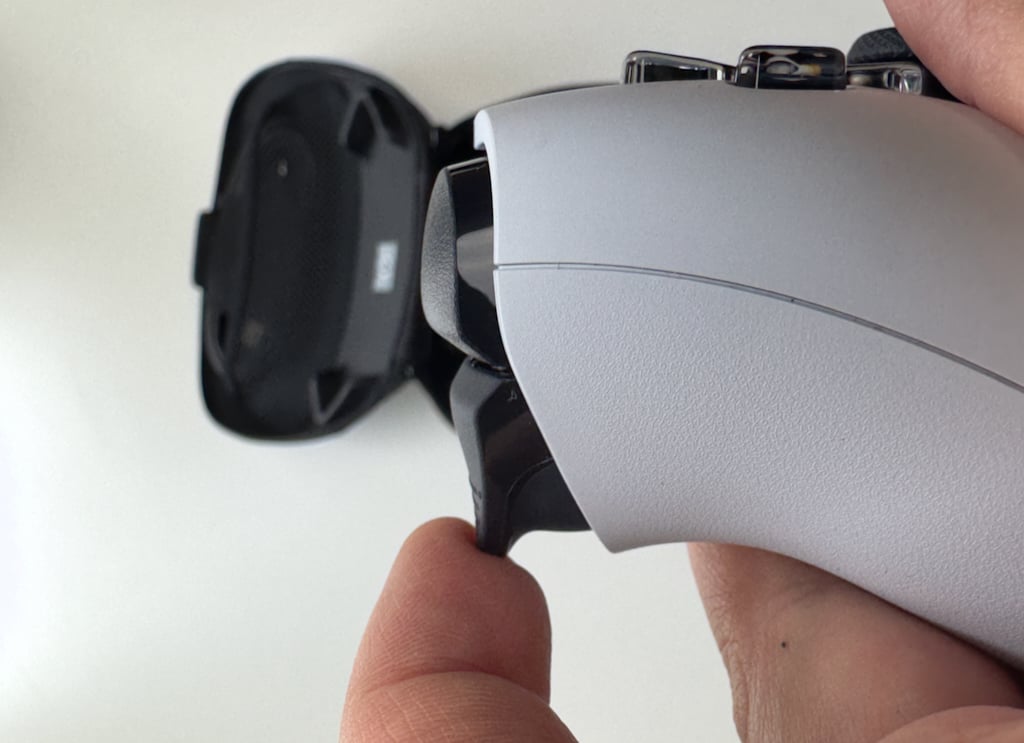
The triggers have also gained a dotted grip texture at the ends of the triggers. I’m trying to think of another category of game that might benefit from the shorter triggers outside of FPS games. For gamers looking to get an edge in shooters, I think this is a huge benefit for trigger speed. But any other game, I’m taking the normal depth just to avoid the strange bottom out.
Seamless software

Software is seamless if you’re on the latest PS5 update, your PS5 will instantly recognize your DualSense Edge and initiate first set up and tutorial. The software experience is really intuitive and useful. The Fn button can be activated in any game, holding to show the quick menu or pairing with a face button to a quick profile swap.
In the quick menu, you can adjust your game and chat volume, select a profile or even leave the game to edit your profile settings.
Smaller shape & design
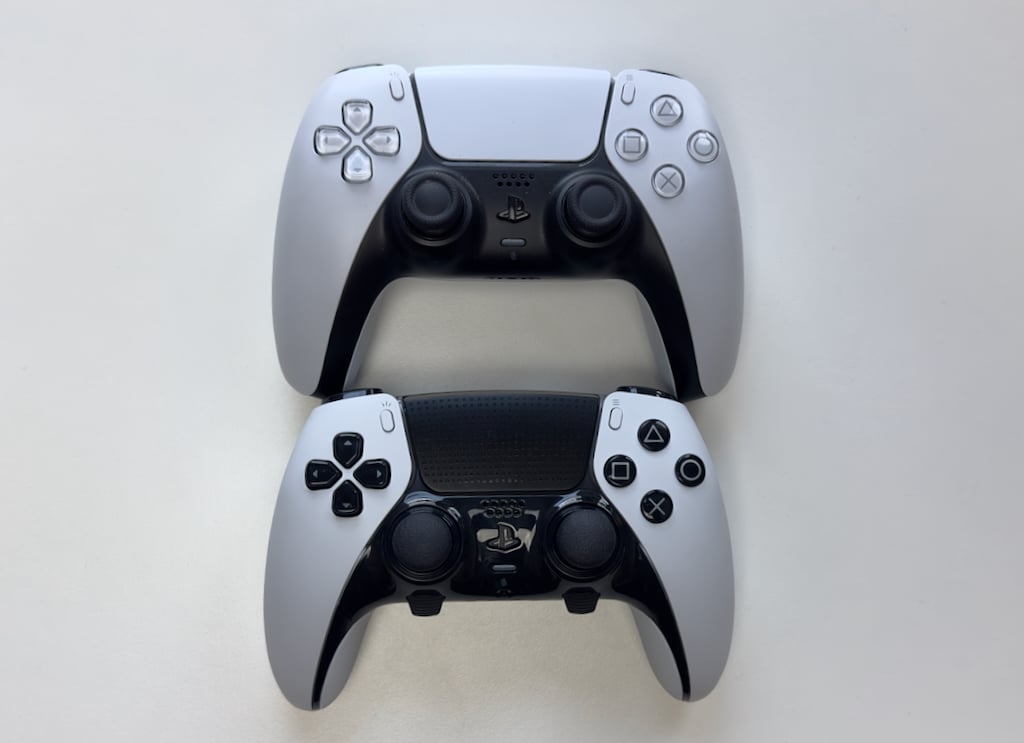
The DualSense Edge is smaller than the original DualSense in width and height.
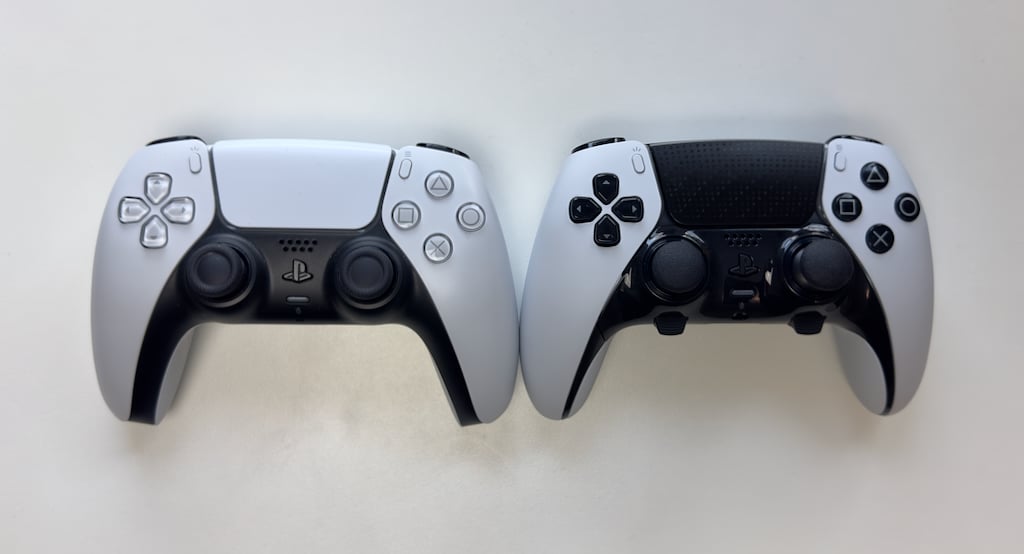
The difference is subtle but noticeable, I’d guess that the Edge is a more comfortable grip for most hands. Larger handed gamers might have to pass on the Edge if the regular Dual Sense was already feeling cramped.
Any sort of mounts or holders should work for either controller.
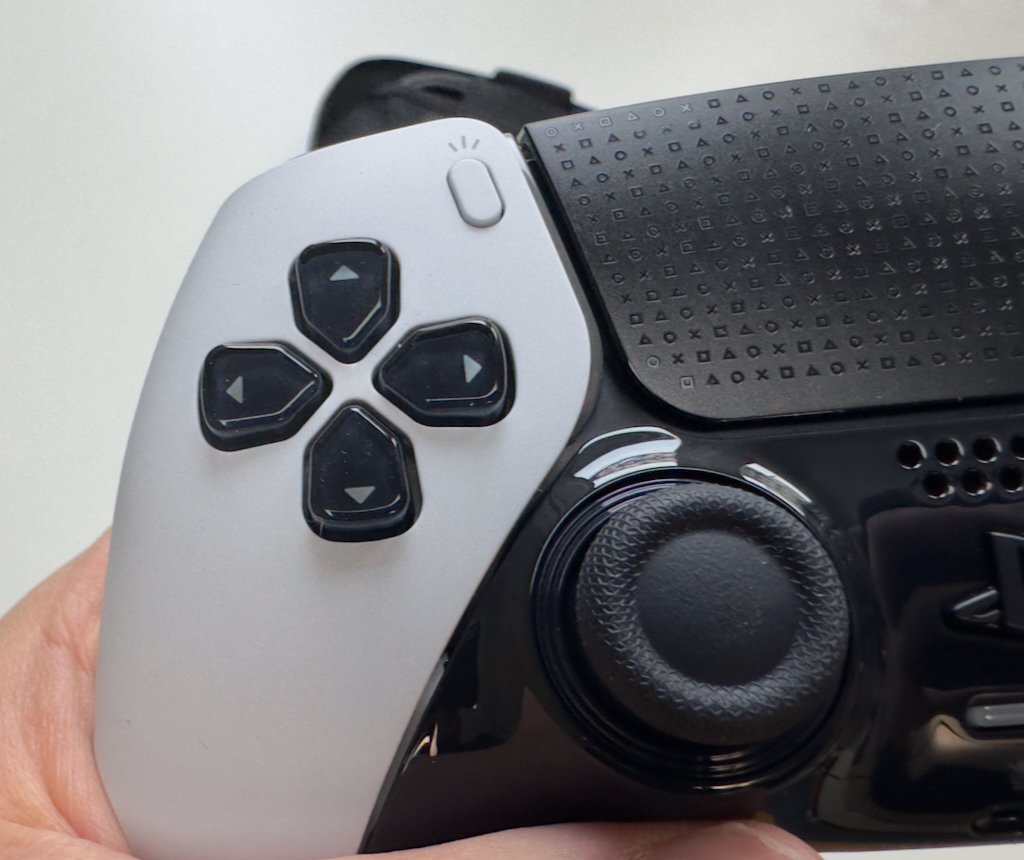
Sony noticed how much everyone loved the hidden pattern on the back of the original DualSense, so they brought a pattern to the touchpad as well. At the top, the touchpad is more squared off, while the original touchpad had a gentle curve.
The only other notable design change was the blacking out of the d-pad and face buttons. The Edge still easily recognizable as a DualSense controller.
The controller still works well with the official charging dock.
The Case
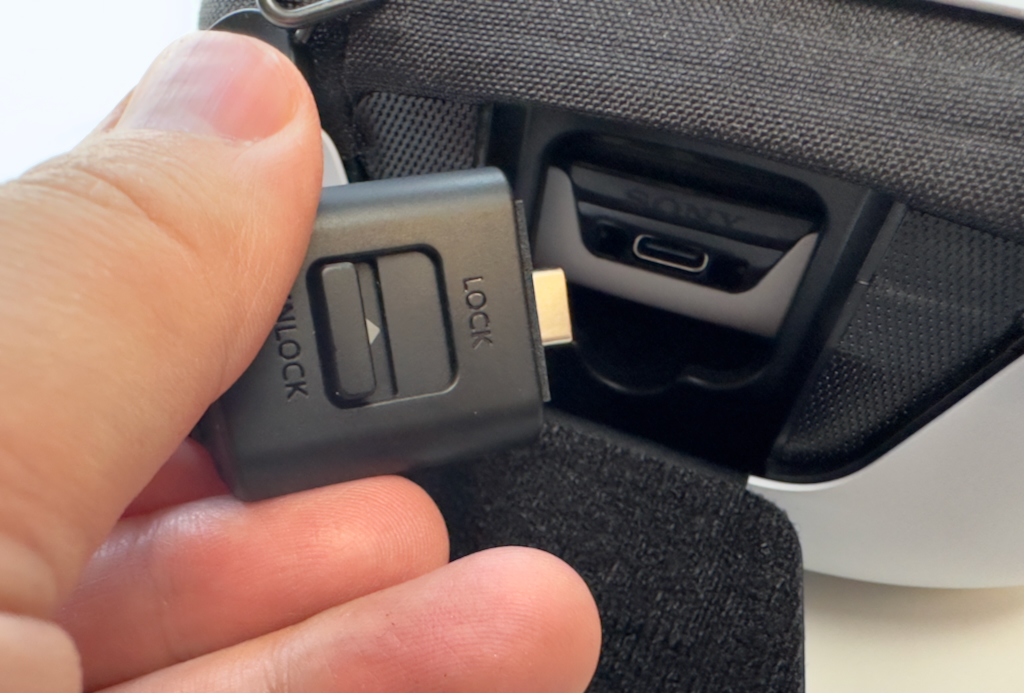
The case will fit everything you need to bring with your DualSense Edge. The case has a hard outer shell, everything fits snugly once zipped up, I’m pretty confident in its protective ability.
It even has a little door for charging!
Build quality
I’m happy to report that the build quality feels great even with all the modular pieces. Thumb sticks still seem firm and the triggers feel like they would at full depth.
I have some concern about the longevity of the shorter stops on the triggers wearing down a bit.
Other than that, the body of the controller feels as solid as the original DualSense.
PC Support
PC support out of the box for the DualSense isn’t great. You need a PS5 to be able to assign back paddle buttons and other settings. It will connect to a PC over Bluetooth fine, but you won’t be able to take advantage of a lot of the new features without a PS5.
You can get DSX on Steam to enable back paddles along with other features.
I’d still recommend an Xbox controller PC Games.
Steam Deck Support
The Steam Deck fully support the Edge’s back paddles and function buttons, allowing remapping. The DualSense is already one of the top choices for the Steam Deck with its functional touchpad, gyro and adaptive triggers for Sony games.
Battery life
Check out the battery size difference/ pic.twitter.com/oAOS7yWbiM
— Budd's Controllers (@buddscontroller) January 26, 2023
Bad news, the battery on the DualSense Edge is a lot smaller than the original.
The DualSense Edge has a 1050 mAh battery compared to the originals 1560 mAh battery. It does seem like the controller is lasting roughly one third less than the original.
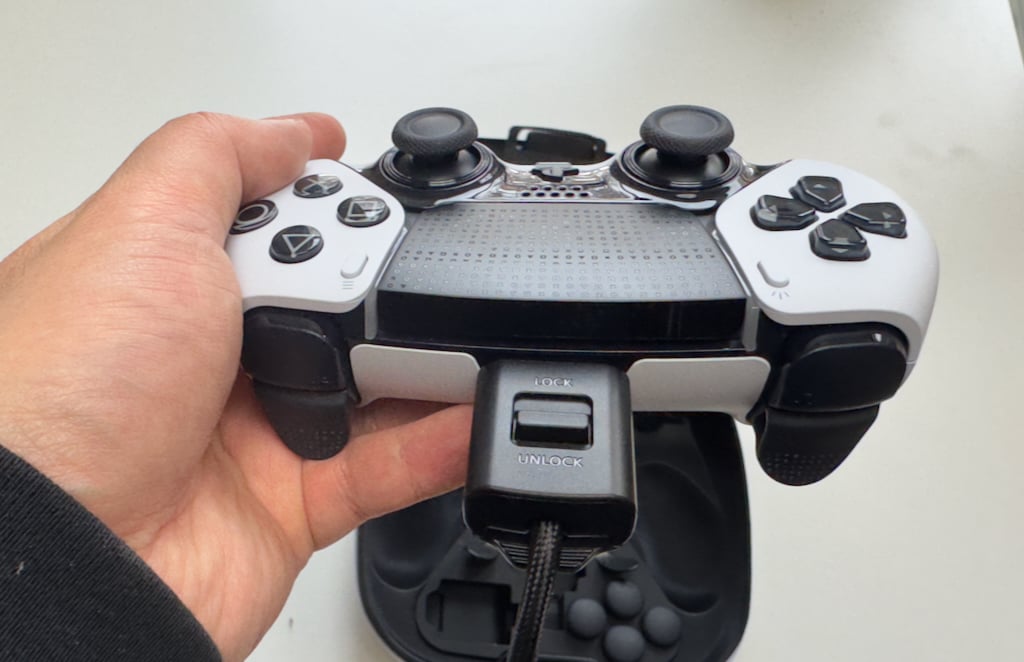
I guess the low battery life is why they’re emphasizing this cable lock to make sure your controller stays connected and charged. I’m not really sure what the use case is for this lock, the USB-C cable stays in the controller pretty well under normal circumstances.
What’s in the box
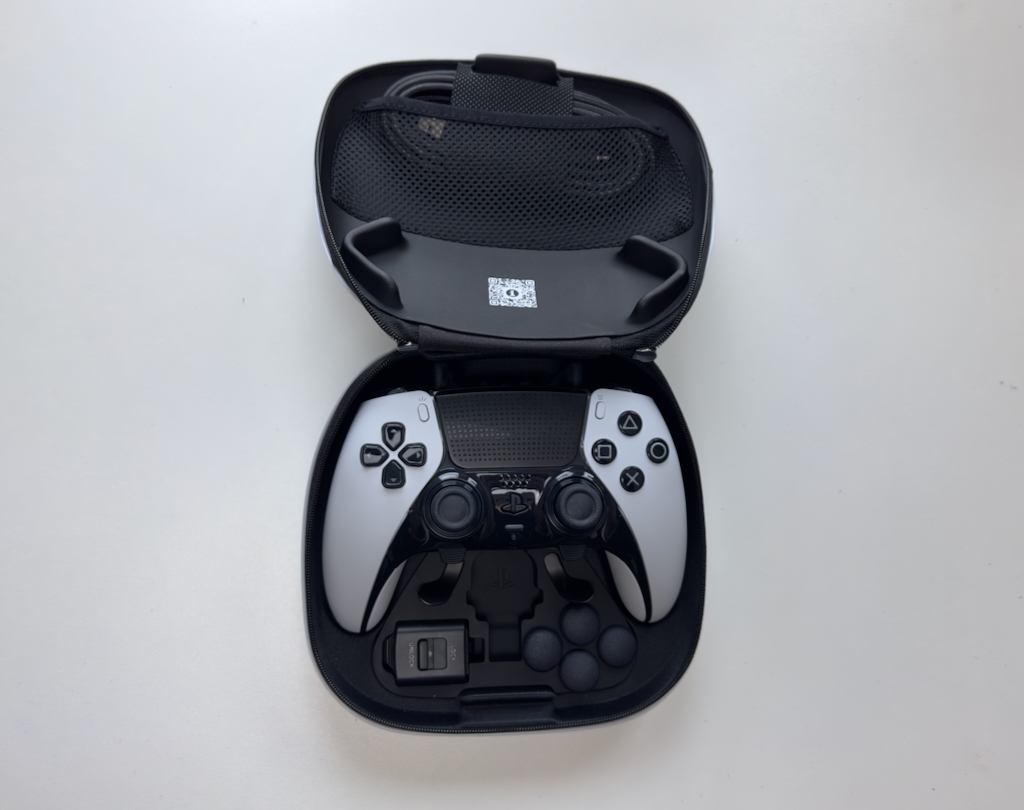
- DualSense Edge controller
- Braided USB-C cable
- 2x lever back paddles
- 2x half dome back paddles
- 2x standard thumb stick caps
- 2x high dome thumb stick caps
- 2x low dome thumb stick caps
- Locking connector attachment
- Carrying case
- Manual/warranty document

